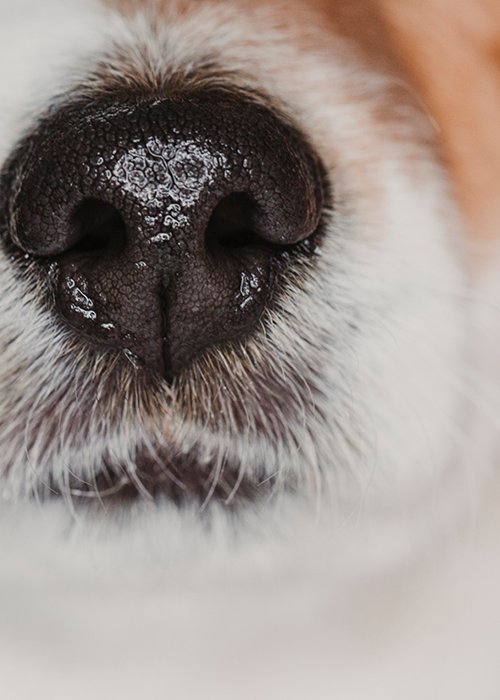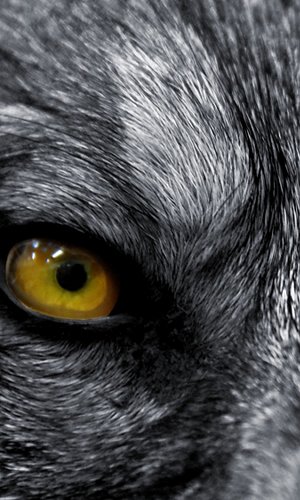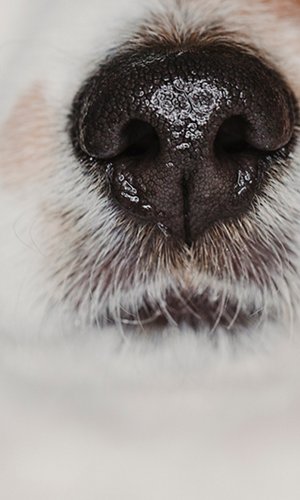For humans, vision is our dominant sense; but for dogs, the world is a universe of smells. Just as we rely on our eyes, dogs primarily experience reality through their noses. Despite a shared history spanning over 40,000 years and our use of dogs as natural “odour detectors”, we still know surprisingly little about how dogs interpret smells and perceive their surroundings. A recent study, however, brings us closer to understanding what a dog’s nose truly “feels”. Dogs are born scent detectives. A dog’s nose contains over 10 million olfactory receptors, vastly more than the approximately 6 million in the human nose, making canine noses more than 10,000 times more sensitive to smell than ours. Dogs can detect tiny amounts of scent; for example, police dogs can identify as little as 0.01 microlitres of petrol in the environment. This extraordinary olfactory capacity has long helped humans, reinforcing our deep bond with dogs. Today, dogs continue to partner with us: as hunting partners, sniffing out food, assisting law enforcement, finding illicit substances, detecting disease as “medical colleagues”, and helping conservation efforts by locating rare or endangered species. Understanding how dogs interpret smells and perceive their world is a fascinating challenge. Studying brain activity when dogs encounter specific scents may help scientists identify which brain areas are involved in smell detection, and ultimately, how dogs feel about what they’re smelling, potentially improving the selection and training of detection dogs. Until now, research required expensive equipment and dogs to stay perfectly still to study their brain, limiting studies on working dogs or breeds less inclined to remain still for prolonged periods. Besides, you can’t simply extrapolate data from dogs that remain still, because different breeds show varying levels of trainability and olfactory performance. The recent study mentioned employed a new, cost-effective, and non-invasive method to explore how the canine brain responds to smells. Researchers believe that this method (known as speckle analysis with artificial intelligence) will help identify how dogs' brains react to scents and what this means for the way dogs perceive and respond to the world around them in future research. The team developed an optical sensor to target three brain regions involved in canine scent discrimination: the amygdala, the olfactory bulb, and the hippocampus. The amygdala is in charge of emotional responses to stimuli. The olfactory bulb processes smells, and the hippocampus is associated with memory formation. The equipment used in the study included a high-resolution digital camera connected to a computer, along with a green laser. The laser light, capable of penetrating the dog's fur and skull, was shone on the heads of four relaxed, blindfolded study dogs while they were exposed to different odours. These substances appeared to trigger similar olfactory responses in the dogs. As the laser light was reflected by the three brain regions, the camera picked up interference patterns in the form of a distinctive “speckle” pattern. The camera recorded for five seconds at a time, repeating the process four times for each scent. AI then analysed the differences in the speckle patterns from the various brain regions to build a model of how the dogs’ brains responded to each odour. The study’s results highlighted the key role of the amygdala in canine scent discrimination. This suggests there may be an emotional component in how dogs perceive their environment. It’s also known that taste and smell are linked to memory formation and emotional states in humans. Since dogs seem to experience emotional responses to odours, training methods and experiences might need to take this into account. For instance, dogs often associate the distinctive smell of a veterinary clinic with unpleasant situations. Dogs in scent detection training could likely benefit from being in a positive emotional state when exposed to training odours. This research could even pave the way for the development of specialised equipment to detect and interpret dogs’ scent responses. Portable tools that work in real-time could allow us to understand what a dog’s nose is telling them as it happens. This isn’t as far-fetched as it might sound. If you’ve seen the Disney film Up, you might remember Dug, the dog who wore a collar that translated his barks. Well, scientists have actually developed a real collar that claims to tell you what your dog’s vocalisations mean. It’s hard to say how accurate it is without examining the data the collar’s AI was trained on, but the database is growing as more dogs use the collars. If these collars prove to be reliable, it might not be long before wearable tech can tell us exactly what our dogs are saying, and even smelling. Understanding our dogs’ olfactory world is an exciting step toward a deeper insight into our animal companions and the way they interact with the world we share.





